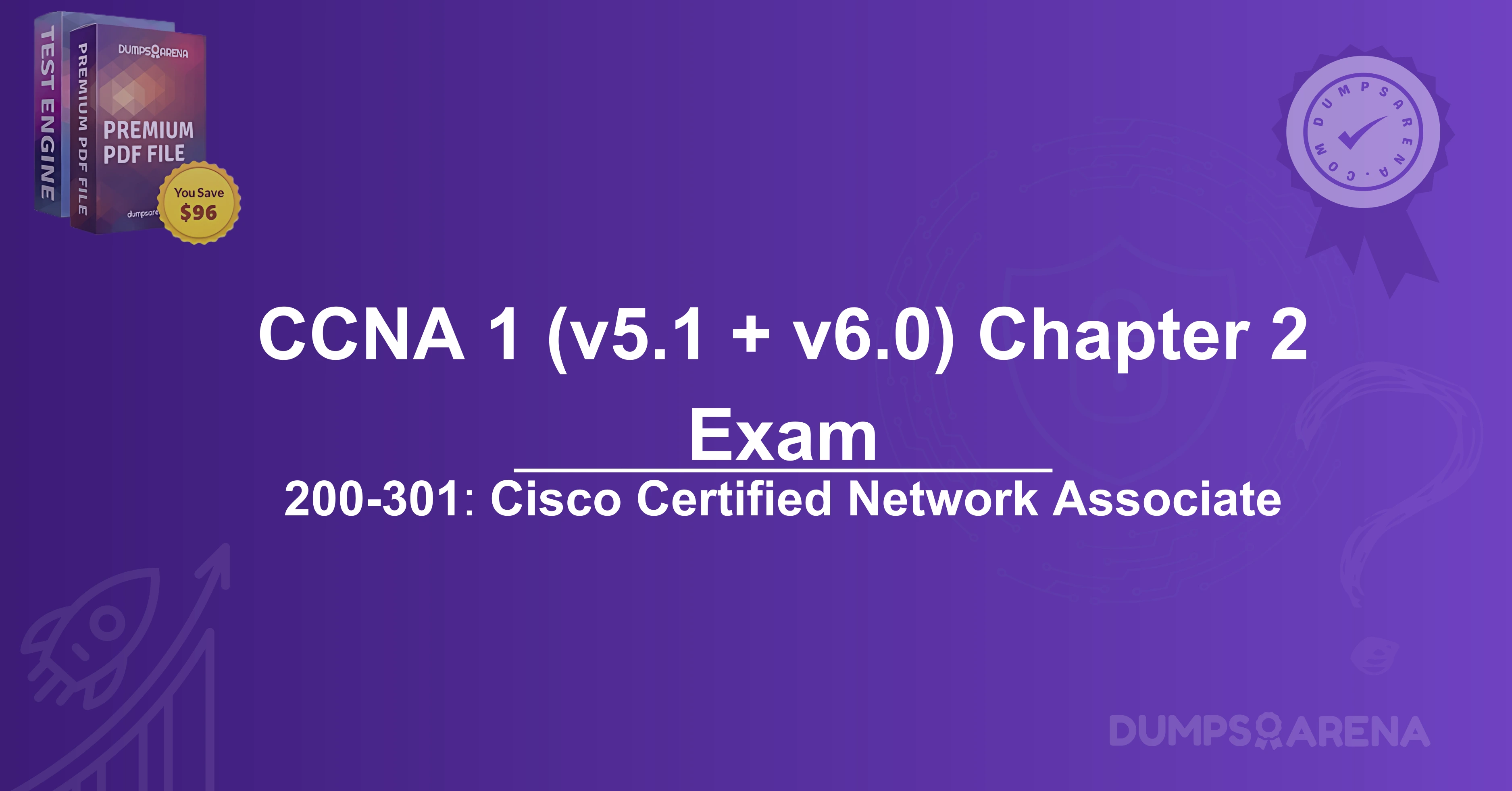1. Introduction
IPv4 addressing is a fundamental aspect of network design, ensuring that end devices can communicate efficiently within a network and across the internet. A well-structured IPv4 addressing scheme enhances network performance, security, and scalability. This article explores the essential criteria for designing an IPv4 addressing scheme for end devices, its relevance in the Cisco 200-301 exam, and how DumpsArena aids in certification preparation.
2. Understanding IPv4 Addressing
IPv4 (Internet Protocol version 4) uses a 32-bit address space, allowing approximately 4.3 billion unique addresses. Each IPv4 address consists of four octets (e.g., 192.168.1.1) and is divided into:
- Network Portion – Identifies the network.
- Host Portion – Identifies the device within the network.
IPv4 addresses are classified into:
- Class A (1.0.0.0 to 126.255.255.255) – Large networks.
- Class B (128.0.0.0 to 191.255.255.255) – Medium-sized networks.
- Class C (192.0.0.0 to 223.255.255.255) – Small networks.
- Class D (224.0.0.0 to 239.255.255.255) – Multicast addresses.
- Class E (240.0.0.0 to 255.255.255.255) – Reserved for experimental use.
Subnetting further divides networks into smaller segments for efficient address utilization.
3. Key Criteria for Designing an IPv4 Addressing Scheme
A. Subnetting and Address Allocation
Subnetting optimizes IP address usage by breaking large networks into smaller subnets. Key considerations:
- Determine the number of required subnets.
- Calculate the number of hosts per subnet.
- Use Variable Length Subnet Mask (VLSM) for flexible allocation.
Example:
- A company with 5 departments needs separate subnets.
- Using VLSM, assign /26 (62 hosts) to large departments and /28 (14 hosts) to smaller ones.
B. Hierarchical Addressing
A hierarchical design simplifies routing and management:
- Core Layer – Uses summarized routes.
- Distribution Layer – Aggregates subnets.
- Access Layer – Assigns addresses to end devices.
C. Scalability and Future Growth
- Reserve extra subnets for expansion.
- Avoid assigning all addresses at once.
D. Efficient Use of Address Space
- Implement Classless Inter-Domain Routing (CIDR) to reduce wastage.
- Use private IP ranges (RFC 1918) for internal networks:
- 10.0.0.0/8
- 172.16.0.0/12
- 192.168.0.0/16
E. Private vs. Public IP Addressing
- Private IPs – Used internally (NAT translates them to public IPs).
- Public IPs – Required for internet-facing devices.
F. Security Considerations
- Use firewall rules to restrict unauthorized access.
- Implement access control lists (ACLs) to filter traffic.
G. Documentation and Management
- Maintain an IP address management (IPAM) tool.
- Document subnet allocations and assignments.
4. Role of IPv4 Addressing in Cisco 200-301 Exam
The Cisco 200-301 (CCNA) exam tests IPv4 addressing concepts, including:
- Subnetting calculations
- VLSM and CIDR
- NAT and private addressing
- Troubleshooting IP connectivity
Candidates must demonstrate proficiency in designing and troubleshooting IPv4 networks.
5. How DumpsArena Helps in Cisco Certification Preparation?
- DumpsArena is a leading platform for IT certification preparation, offering:
- Latest Cisco 200-301 Exam Dumps – Real exam questions with verified answers.
- Detailed Explanations – Helps understand IPv4 addressing concepts.
- Practice Tests – Simulates the actual exam environment.
- Up-to-Date Content – Aligns with Cisco’s latest syllabus.
By using DumpsArena, candidates gain confidence in tackling IPv4-related questions in the CCNA exam.
6. Conclusion
Designing an efficient IPv4 addressing scheme requires careful planning, subnetting, and security considerations. Mastering these concepts is crucial for the Cisco Certification test, and platforms like DumpsArena provide the necessary resources for success.
For aspiring network engineers, understanding IPv4 addressing is not just an exam requirement—it’s a foundational skill for real-world networking.
Get Accurate & Authentic 500+ CCNA 200-301 Exam Questions
1. What is a key requirement when assigning IPv4 addresses to end devices?
A) Every device must have the same IP address.
B) Each device must have a unique IP address within its network.
C) IP addresses must always start with 127.
D) All devices must use DHCP.
2. Which of the following is NOT a valid consideration when designing an IPv4 addressing scheme?
A) Ensuring no IP address conflicts exist.
B) Assigning addresses from different subnets to devices on the same LAN.
C) Using private IP addresses for internal networks.
D) Following the rules of classful or classless addressing.
3. What is the purpose of a subnet mask in IPv4 addressing?
A) To encrypt data packets.
B) To define which part of the IP address is the network portion and which is the host portion.
C) To automatically assign IP addresses.
D) To block unauthorized devices.
4. Which IPv4 address range is reserved for private networks?
A) 192.168.0.0 – 192.168.255.255
B) 200.100.50.0 – 200.100.50.255
C) 172.0.0.0 – 172.255.255.255
D) 10.0.0.0 – 10.255.255.255
5. Why should broadcast addresses be excluded when assigning IPv4 addresses to hosts?
A) They are reserved for routers only.
B) They are used for sending data to all devices on a network, not for individual hosts.
C) They are only for DNS servers.
D) They are invalid addresses.
6. What happens if two devices on the same network have the same IPv4 address?
A) Both devices will function normally.
B) It will cause IP address conflicts and communication issues.
C) The network speed will double.
D) The router will automatically reassign new addresses.
7. Which of the following is a valid host address in the subnet 192.168.1.0/24?
A) 192.168.1.0
B) 192.168.1.255
C) 192.168.1.100
D) 192.168.0.1
8. What is the maximum number of host addresses available in a /24 subnet?
A) 254
B) 256
C) 255
D) 128
9. Which protocol is commonly used to automatically assign IPv4 addresses to end devices?
A) DNS
B) DHCP
C) FTP
D) HTTP
10. Which of the following IPv4 addresses is a loopback address?
A) 192.168.1.1
B) 127.0.0.1
C) 8.8.8.8
D) 169.254.1.1




